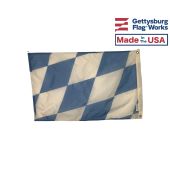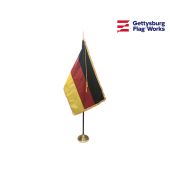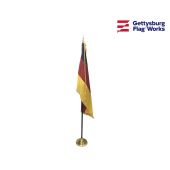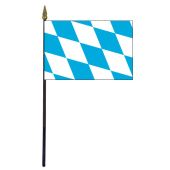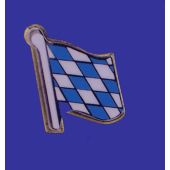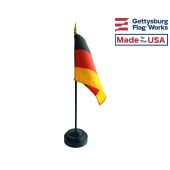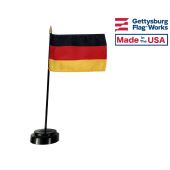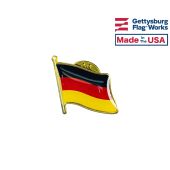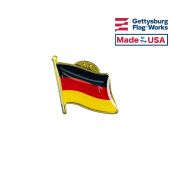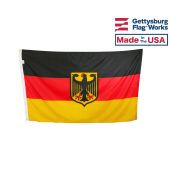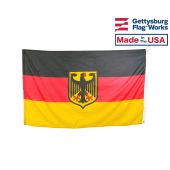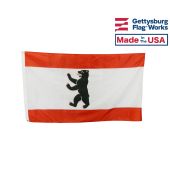Flag of Germany

The German Flag
The German flag is composed of three colors: red, black and gold. Each color is represented on one of three equal horizontal strips across the flag. This design was officially recognized as the national flag of Germany in 1919. Although German flags have seen several transformations over hundreds of years, it is this design from 1919 that represents Germany today.
- Capital of Germany: Berlin
- Area of Germany: 137,847 Sq. Miles
- Languages used in Germany: German (Deutsch)
- Currency used in Germany: Euro
History of the Flag of Germany
When Germany was divided after the end of WWII each side chose an individual flag design. West Germany retained the 1919 flag design while the East German government chose the same design, but with the addition of a coat of arms. Adding the coat of arms was seen as a deliberate challenge to the West German government and part of a continuing attempt to keep Germany divided.
East German flags became known as Spalterflagges or divider flags and their use was banned in West Germany. In November 1989 when the Berlin Wall fell, citizens cut out the coat of arms from their East German flags. This mass removal of the coat of arms represented popular support for a united Germany. In October 1990 the black, red and gold tri-color flag became the official symbol of a reunified Germany.
Present Day Flag Use
Displaying national symbols, including the flag, is not a common practice in Germany. This remains a direct reaction to the prominent use of flags by the Nazi Party throughout WWII. All Nazi symbolism continues to be banned in Germany. For this reason WWII computer games that are released in Germany do not show the Nazi flag. It is replaced by the modern tri-color.
Today common displays of the national flag are rare even among those who buy German flags. The flag is primarily used by officials on state holidays and special occasions. However, citizens who buy German flags do commonly exhibit their national pride by showcasing the German flag at international sporting events. In some German states and sub-state regions residents often choose to display their regional flags instead of the national one.In 2006 during the FIFA World Cup in Germany public use of the national flag noticeably increased. Many Germans met this rise in the flag's popularity with apprehension. The long standing fear remained that national pride and flag-waving were inextricably linked with Nazism. However, by the end of the tournament, this decades-old worry was dismissed by Germans and non-Germans alike.



